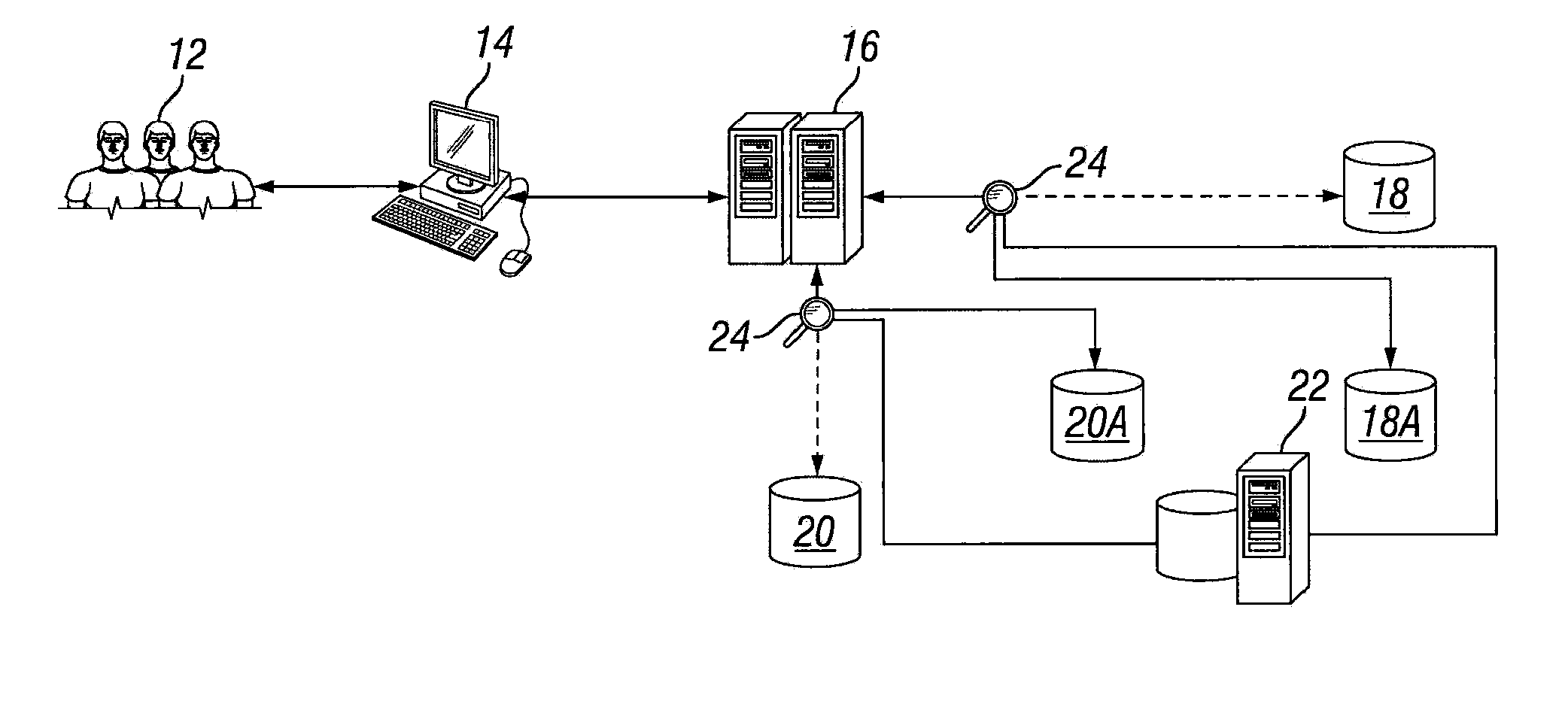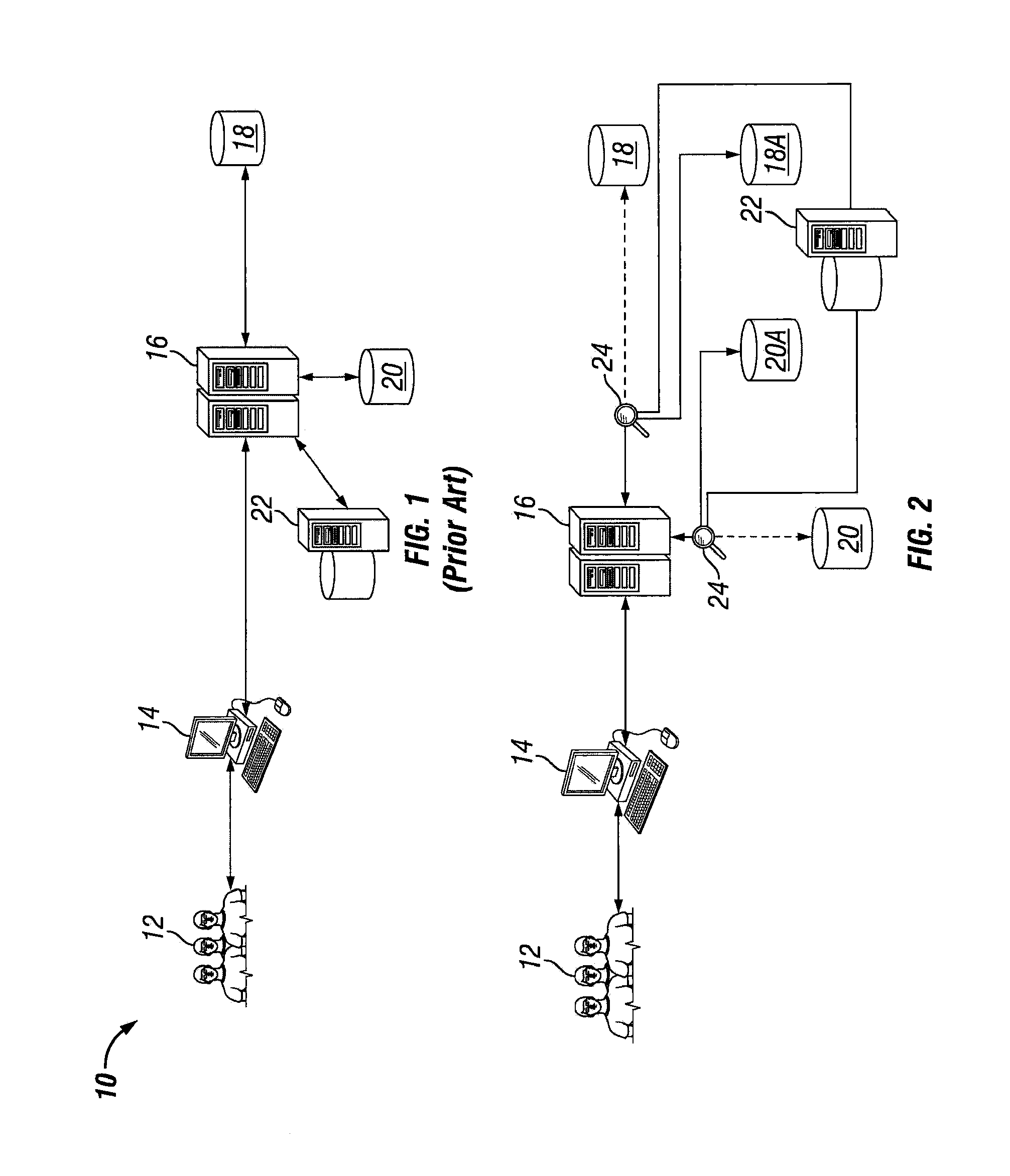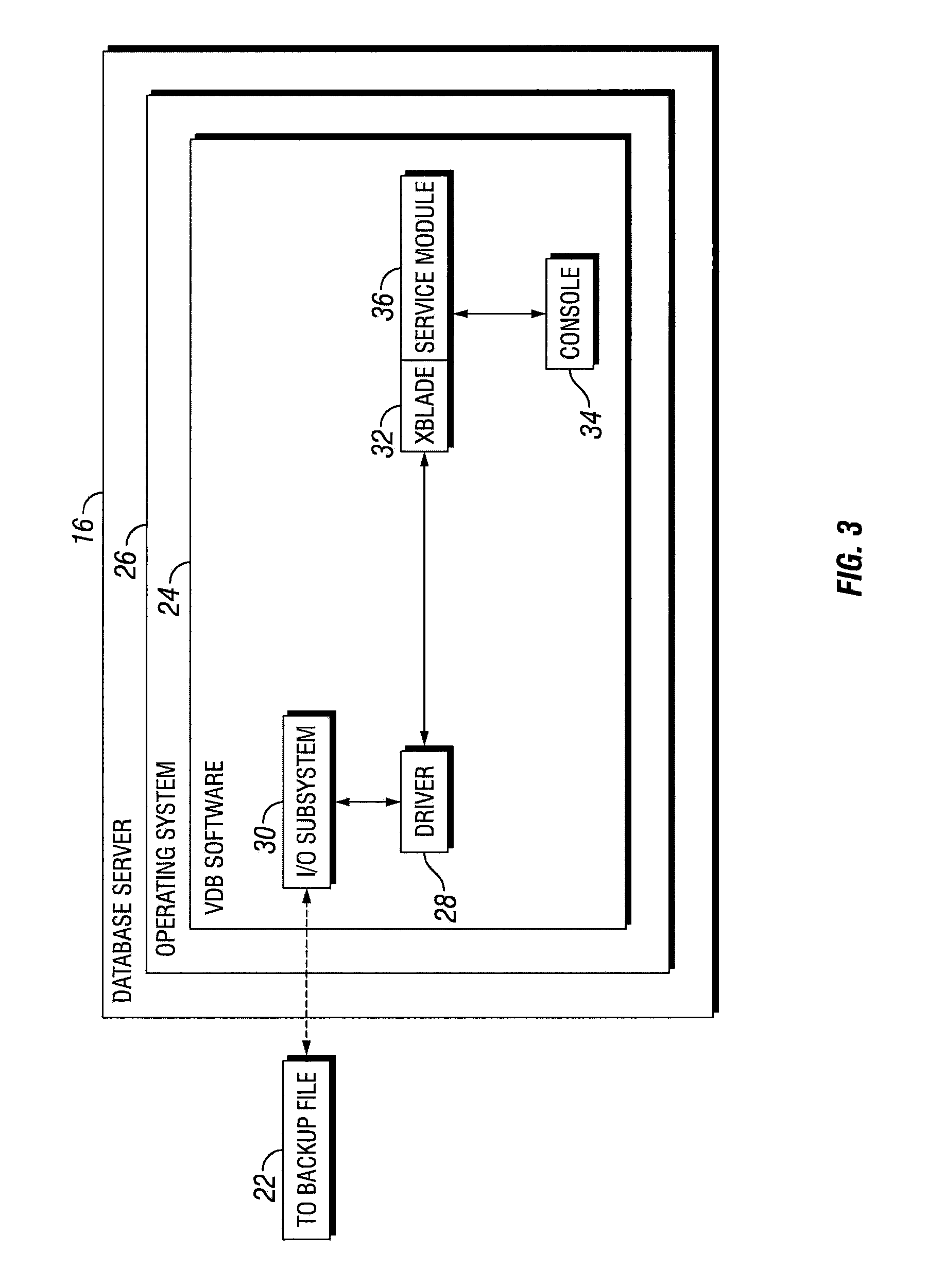System, method, and computer program product for creating a virtual database
a virtual database and database technology, applied in the field of database recovery, can solve the problems of data loss or alteration of data in the tables contained in the data file, the entire original data file of the database has been corrupted, lost or deleted, and the work of uncommitted transactions which might have been applied
- Summary
- Abstract
- Description
- Claims
- Application Information
AI Technical Summary
Problems solved by technology
Method used
Image
Examples
Embodiment Construction
[0039]Illustrative embodiments and related methods of the invention are described below as they might be employed in virtual server recovery. In the interest of clarity, not all features of an actual implementation are described in this specification. It will of course be appreciated that in the development of any such actual embodiment or methodology, numerous implementation-specific decisions must be made to achieve the developers' specific goals, which will vary from one implementation to another. Moreover, it will be appreciated that such a development effort might be complex and time-consuming, but would nevertheless be a routine undertaking for those of ordinary skill in the art having the benefit of this disclosure. Further aspects and advantages of the various embodiments, methods and computer program products of the invention will become apparent from consideration of the following description and drawings.
[0040]Embodiments of the invention will now be described with refere...
PUM
 Login to View More
Login to View More Abstract
Description
Claims
Application Information
 Login to View More
Login to View More - R&D
- Intellectual Property
- Life Sciences
- Materials
- Tech Scout
- Unparalleled Data Quality
- Higher Quality Content
- 60% Fewer Hallucinations
Browse by: Latest US Patents, China's latest patents, Technical Efficacy Thesaurus, Application Domain, Technology Topic, Popular Technical Reports.
© 2025 PatSnap. All rights reserved.Legal|Privacy policy|Modern Slavery Act Transparency Statement|Sitemap|About US| Contact US: help@patsnap.com



